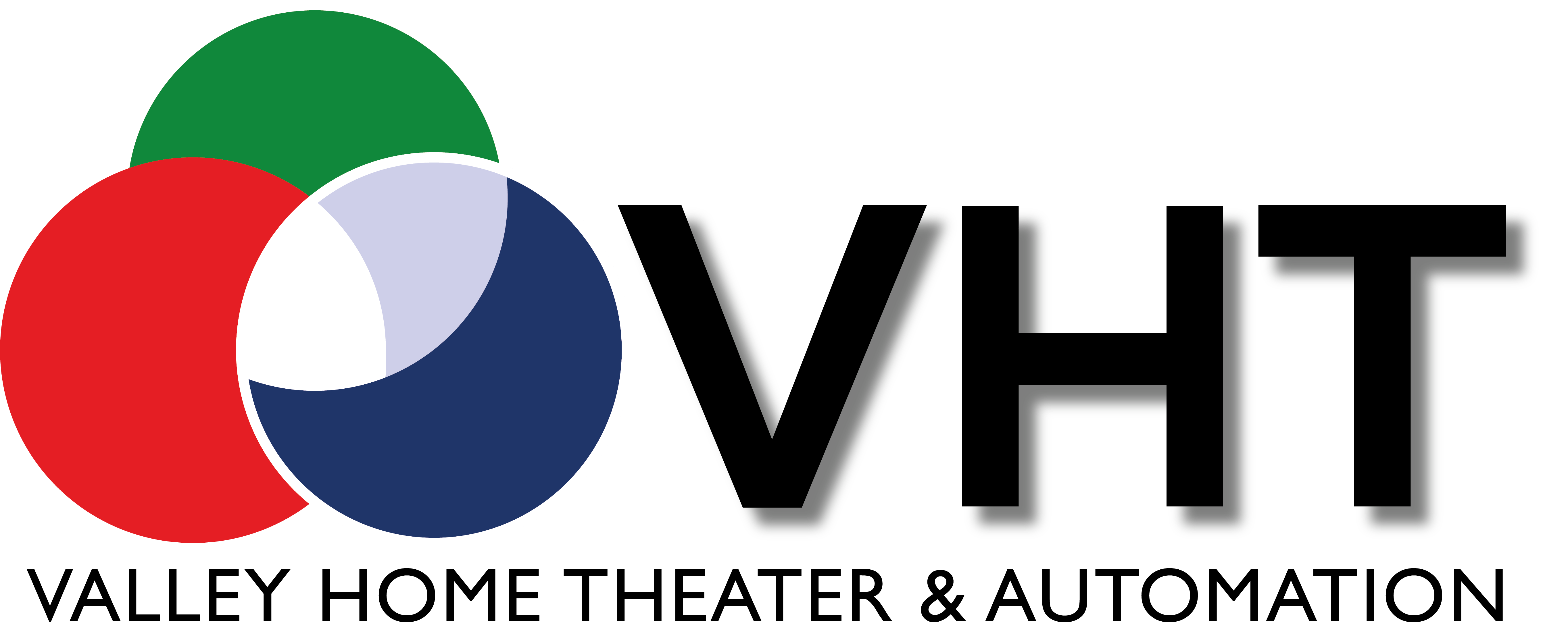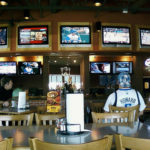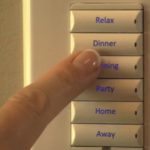
Internet streaming has changed how people get their media. Three-quarters of all U.S. music industry revenue in 2018 came from music streaming, far surpassing CD purchases and digital downloads. For movies and television content, streaming services like Netflix and Amazon are taking viewers away from cable and satellite services, as well as DVD and Blu-ray media.
Unfortunately, this ease of access is plagued by varying and sometimes subpar source quality. To work around these limitations, many enthusiasts opt for high-end home theater sound systems. If you’re wanting to get the most out of low-bandwidth streaming media today, while also being ready for high-bitrate audio and video, investing in good quality audio equipment is the best solution.
Even across the top music streaming solutions, sound quality and service options vary greatly.
There are many movie and music streaming solutions available today, each with their own libraries of exclusive content. However, no one streaming service provides everything people want, from content to functionality. Fewer still actually offer “lossless” quality music streaming, with Deezer, TIDAL, and Qobuz leading the pack. Some streaming services have been considering making the leap (while Spotify is actively testing it), but it’s not yet mainstream.
Why does sound source quality matter so much? The problem lies in the details lost with most audio compression formats. For you to be able to store thousands of songs on your phone or other personal device (and for services to stream them to millions of users every day), smaller file sizes are necessary.
But in order to shrink those files down, lossy compression formats are commonly employed. MP3, for example, is still one of the most popular music file formats in the world today, while Spotify uses Ogg Vorbis, with both formats typically being used to compress music down to bitrates of 160 to 320 kbps. The average compressed song is around 4 to 8 megabytes in size. To get these sizes, bits of sound data are cut out that, ostensibly, human ears can’t hear. For the average person, this is satisfactory. For people who have heard what lossless audio sounds like, the differences can be noticeable even with lower-end audio equipment.
A high-quality home audio system can provide sound that is as close to the original source as possible.
Until lossless streaming audio becomes common, the quality of the streaming source is one aspect of sound quality that is largely out of your hands. But what you can control is the audio equipment you use, which is as important as the quality of your sound source.
It’s true that uncompressed audio, particularly music, can sound decent even with cheaper speakers. But low-end equipment does have limitations. Cheap speakers simply cannot reproduce everything that’s in uncompressed media. Think of the shimmering of cymbals fading after a single solid crash, the basso rumble of a singer’s voice, or the subtle tweaking of acoustic guitar strings layered just behind the chords. These details can be distorted or lost altogether with cheaper equipment. If your audio source is of low quality, it can sound even worse.
Most of Valley Home Theater’s customers are looking for sound quality that can transport them to the hall where the music was originally performed, or into the middle of the action in their favorite films. To do that, you need equipment that has the dynamic range and frequency response necessary to fully reproduce every detailed nuance of the source audio.
Why is dynamic range important to home theaters?
Dynamic range is the ratio of the largest to the smallest intensity of sound that can be reliably transmitted or reproduced by a sound system, measured in decibels. If your sound equipment lacks in dynamic range, you are likely missing out on the details and punch in the musical experience that audiophiles will spend hours trying to describe.
The average person listens to music with earbuds, small speakers mounted to TVs or laptops, or small stand-alone speakers. While there are good products in all these categories, audio quality starts to fall apart the further you are from them, or the louder you raise the volume. These limitations are evidence of their limited dynamic range. Sound becomes muddy, clipped or distorted, and detail is lost the further back you sit.
By contrast, high quality speakers and amplifiers offer greater dynamic range, preserving details that other speakers may be unable to reproduce. While lower quality sound sources will not have all the same detail of uncompressed audio, it is still a superior listening experience across the board.
Frequency response is a key indicator of quality sound equipment.
Frequency response is the range of sound your components can reproduce. Ideally, your sound equipment, from the amps to the speakers themselves, accurately reproduce the input. This is called a “flat” frequency response; whatever input is received is reproduced with minimal to no deviation.
If you don’t have accurate frequency response, you can completely lose details at the low and high ends. Essentially, you may hear too much of one frequency (heavy bass, for example) while missing out on others. Certain instruments may come through stronger than others, which can change the listening experience.
Sound is dynamic, and reproducing every frequency accurately, even with the best equipment, is not always simple with customized home theater setups. Lower-end equipment may not be able to achieve the ideal flat frequency response, even with serious calibration effort.
The goal, then, is to achieve a smooth frequency response, so that the system loses as little detail as possible as a sound source shifts through lower and higher frequencies. Again, high quality sound components are far more likely to have excellent frequency response.
In addition, installation and setup should not be overlooked. Speaker placement such as in-wall, in-ceiling and combinations of speaker locations creates the sound stage and determines how music projects and fills the room both for distributed audio and home theater applications. Many of our clients don’t have the time, or training, necessary to properly calibrate a large home theater system. We take that burden off their hands during installation, calibrating home theater equipment to ensure they get the highest quality audio.
What are the best options for high-quality audio components?
Speakers

There’s no denying that high quality free-standing speakers have power, but in-wall and in-ceiling equipment offers proper theater sound, without cluttering up the room. Having fewer things for kids to run into is also a nice bonus!
When many people start getting into high-end audio, they’re struck by the sheer size of some freestanding speaker towers and subwoofers. For people who care for the aesthetics of their home theater system as much as the sound and the video, this can be a bit of a sticking point.
Fortunately, whether you’re buying tower speakers, or angled in-wall/in-ceiling speakers, there are a variety of high-quality solutions available to ensure that you get the best possible sound. These days, going with in-wall equipment out of practicality or aesthetics doesn’t necessarily mean you’re sacrificing aspects of your overall experience.
Many Valley Home Theater customers opt for installations of in-wall and in-ceiling speakers. After 30 years of experience and lots of side-by-side testing, we have determined that the Paradigm line of in-ceiling, in-wall speakers and subs perform extremely well and can be tailored to match our customers’ sound quality requirements and budget. These products and others allow us to design custom systems matching the individual needs of each client.
The build quality of Paradigm components offers fantastic audio capability, while also maintaining the desired aesthetics of the home theater. Their in-wall and in-ceiling units can easily blend in with the rest of the room, while still being perfectly capable of shaking up your seats!
Paradigm offers a considerable range of home theater audio equipment. From traditional speaker towers and subs to in-wall and in-ceiling equipment, this gives us great flexibility when designing home theater systems for our customers. For the true audiophile, a solution may include a set of CI Elite E7LCRs in-wall speakers, an RVC-12SQ in-wall subwoofer paired with an X-Series amplifier to bring the base, and a set of SIG-1.5R-30 in-ceiling speakers can be used to further round out the system. In addition, there are many other options within the Elite, Pro and Home lines that suit different budgets and needs
JL Audio’s home theater presence is focused primarily in subwoofers, and their subs provide some of the cleanest and richest base we’ve heard. JL Audio offers freestanding subs from their Gotham and Fathom lines. As with Paradigm, JL Audio also offers in-wall and in-ceiling equipment, including the Fathom IWSv2-SYS-213.
Amps and Receivers

The amps you use for your home theater can have a dramatic effect on the overall listening experience. You want something that does more than just meet your current requirements, especially if you’re looking to expand your system in the future.
In our experience many people underestimate the difference that good amplification makes in overall sound quality, even with the same speakers and other components. This is attributable to frequency response, harmonic distortion, dynamic range and other factors. Again, with compressed streaming sources a good amp can really make the difference and can bring your system to life. In addition, with today’s multi-room distributed audio, and home theater applications, connectivity features and functionality are also important.
For discerning listeners, the Anthem series of receivers such as the MRX 720 and MRX 1120 produce excellent high fidelity sound quality and surround sound processing. We’ve also found that the Denon AVR-X series perform very well and are suited to a variety of applications.
For distributed home audio systems, Triad amplifiers, provided through Control4, are among the best in class for price versus performance, and these amps are available with matrix switches for multi-room audio distribution and work seamlessly with Control4-enabled smart home automation systems through Composer Pro software.
Hopefully, you now have a good idea about the importance of high-quality home audio components. But it isn’t easy to handle installation by yourself, much less getting everything properly calibrated. If you’re ready for a home theater of your own, contact Valley Home Theater today, and let us provide the perfect audio solution for you!

















